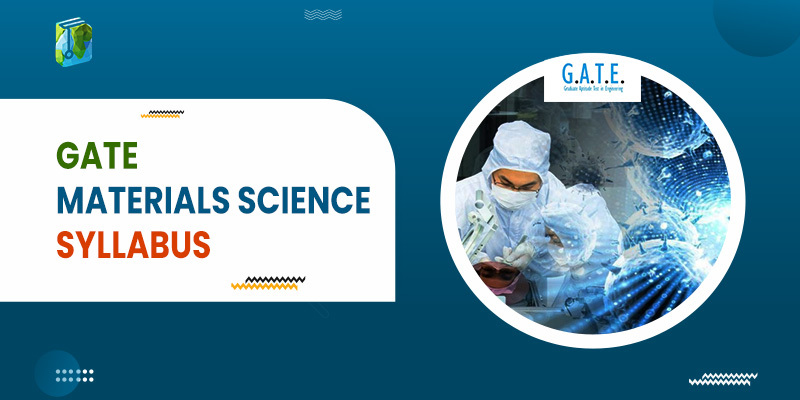The syllabus is an important part of the examination as it gives information about the topics and subtopics which the candidates need to prepare for the examination. The syllabus varies according to the brach opted by the candidate. The candidates who are preparing for the GATE exam must be thorough with the syllabus.
Knowing the syllabus beforehand helps the students to limit the scope of their study and make a better study plan.
This article will give you complete information regarding the GATE Materials Science Syllabus 2024.
GATE Materials Science Syllabus (XE_C) 2024
GATE Material Science (XE_C) Sections consist of eight sections such as Processing of Materials, Characterisation Techniques, Structure and Imperfections, Thermodynamics and Kinetics, Properties of Materials, Material types, Environmental Degradation, and Elements of Quantum Mechanics and Mathematics.
Section 1: Processing of Materials
Powder synthesis, sintering, chemical methods, crystal growth techniques, zone refining, preparation of nanoparticles, and thin films.
Section 2: Characterisation Techniques
X-ray diffraction, spectroscopic techniques like UV-vis, IR, Raman. Optical and Electron microscopy.
Section 3: Structure and Imperfections
Crystal symmetry, point groups, space groups, indices of planes, close packing in solids, bonding in materials, coordination and radius ratio concepts, point defects, dislocations, grain boundaries, surface energy, and equilibrium shapes of crystals.
Section 4: Thermodynamics and Kinetics
Phase rule, phase diagrams, solid solutions, invariant reactions, lever rule, basic heat treatment of metals, solidification and phase transformations, Fick’s laws of diffusion, mechanisms of diffusion, the temperature dependence of diffusivity.
Section 5: Properties of Materials
Mechanical Properties: Stress-strain response of metallic, ceramic, and polymer materials, yield strength, tensile strength, and modulus of elasticity, toughness, plastic deformation, fatigue, creep, and fracture
Electronic Properties: Free electron theory, Fermi energy, the density of states, elements of band theory, semiconductors, Hall effect, dielectric behavior, piezo, Ferro, pyroelectric materials
Magnetic Properties: Origin of magnetism in metallic and ceramic materials, paramagnetism, diamagnetism, Ferro and ferrimagnetism
Thermal Properties: Specific heat, thermal conductivity, and thermal expansion, thermoelectricity
Optical Properties: Refractive index, absorption and transmission of electromagnetic radiation in solids, electrooptic and magneto-optic materials, spontaneous and stimulated emission, gas and solid-state lasers
Section 6: Material types
Concept of amorphous, single crystals and polycrystalline materials, crystallinity and its effect on physical properties, metal, ceramic, polymers, classification of polymers, polymerization, structure and properties, additives for polymer products, processing and applications, the effect of environment on materials, composites.
Section 7: Environmental Degradation
Corrosion, oxidation, and prevention
Section 8: Elements of Quantum Mechanics and Mathematics
Basics of quantum mechanics, quantum mechanical treatment of electrical, optical, and thermal properties of materials, analytical solid geometry, differentiation and integration, differential equations, vectors and tensors, matrices, Fourier series, complex analysis, probability, and statistics.
Conclusion
Though a bit complicated, but material science can fetch you additional marks. Keep taking mock tests regularly.
It is important to analyze your preparation so that you can make appropriate changes in your strategy.
Keep working hard, and do not lose hope.
Good luck with all your future endeavors!
People are also reading:

